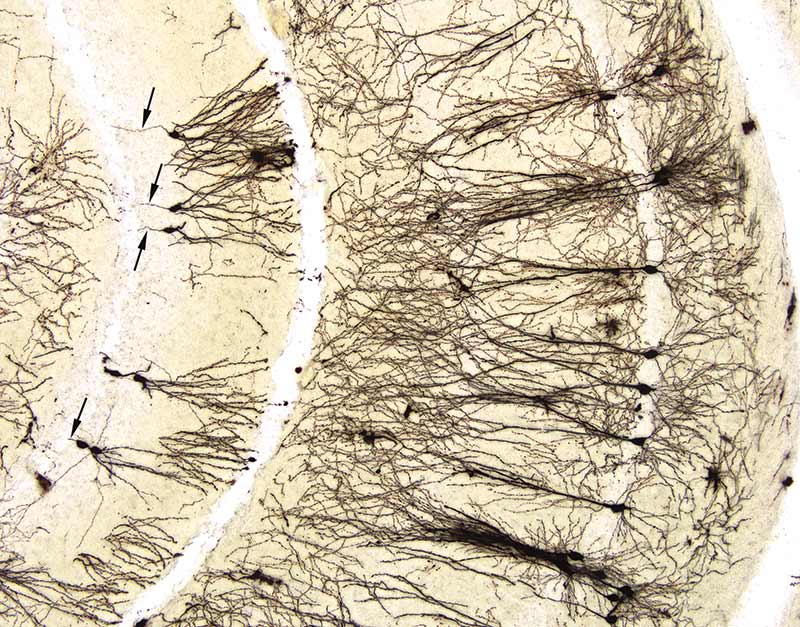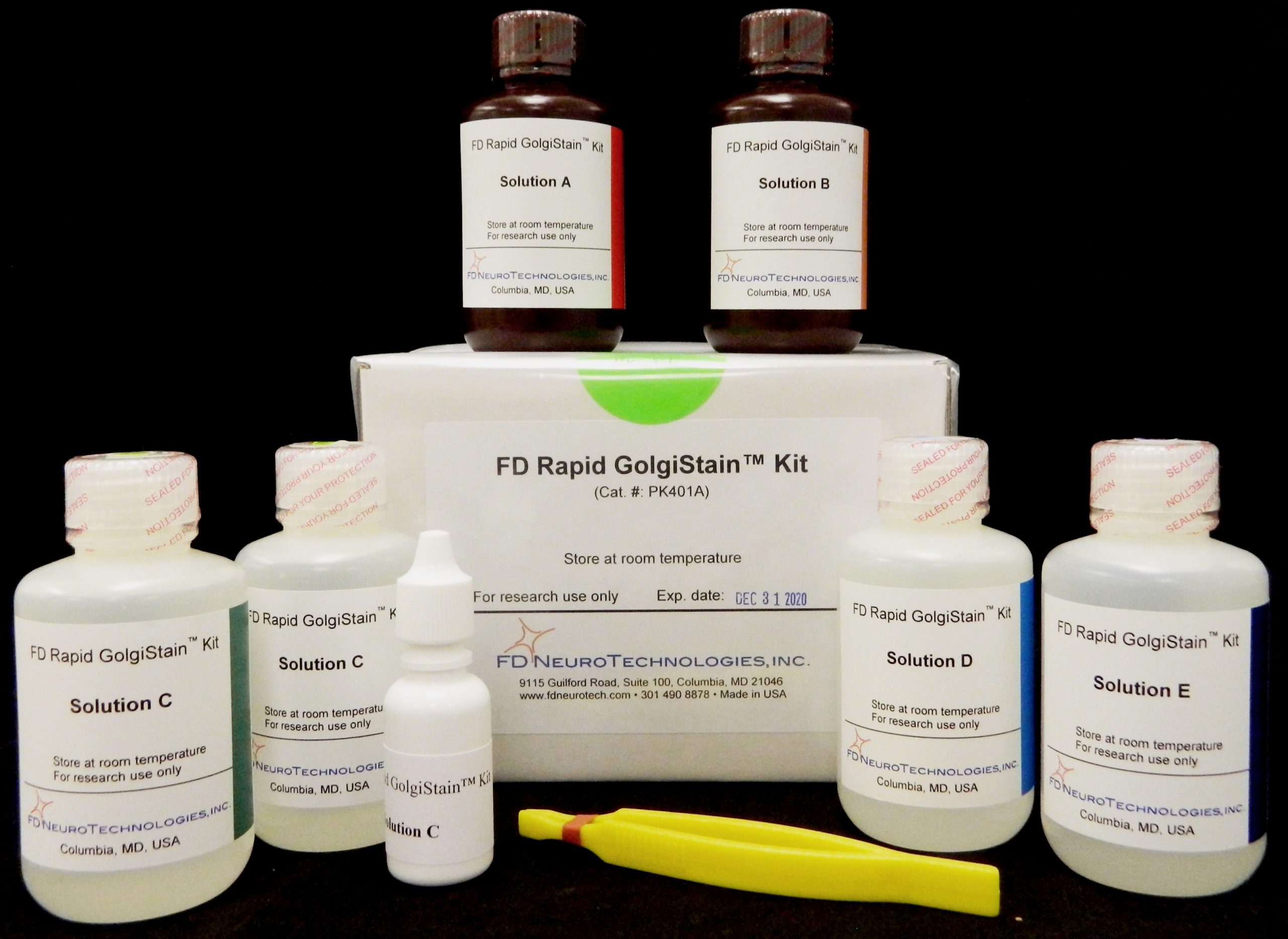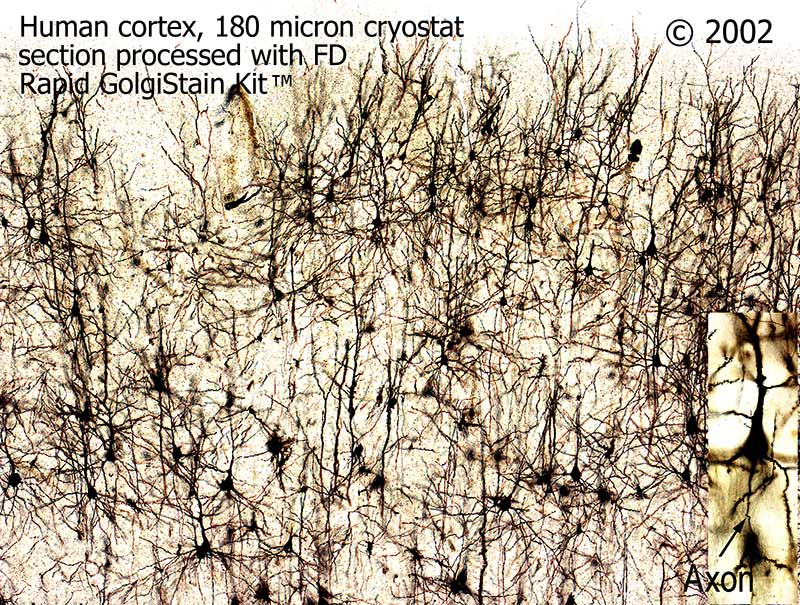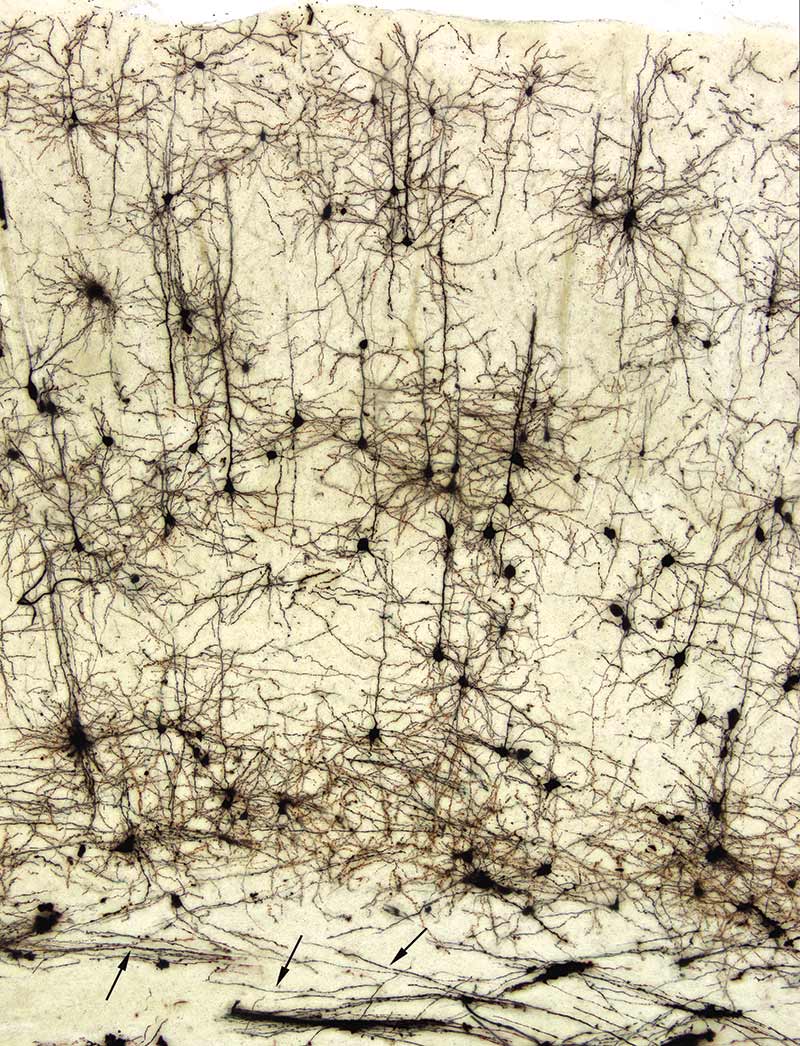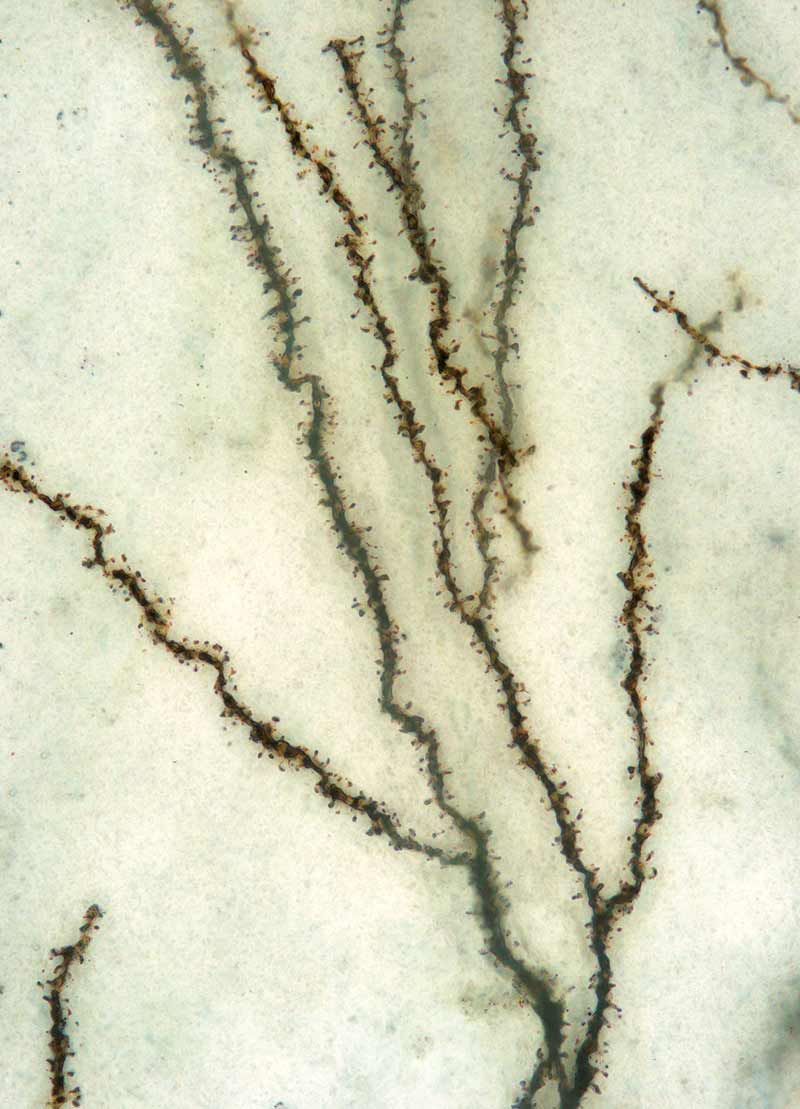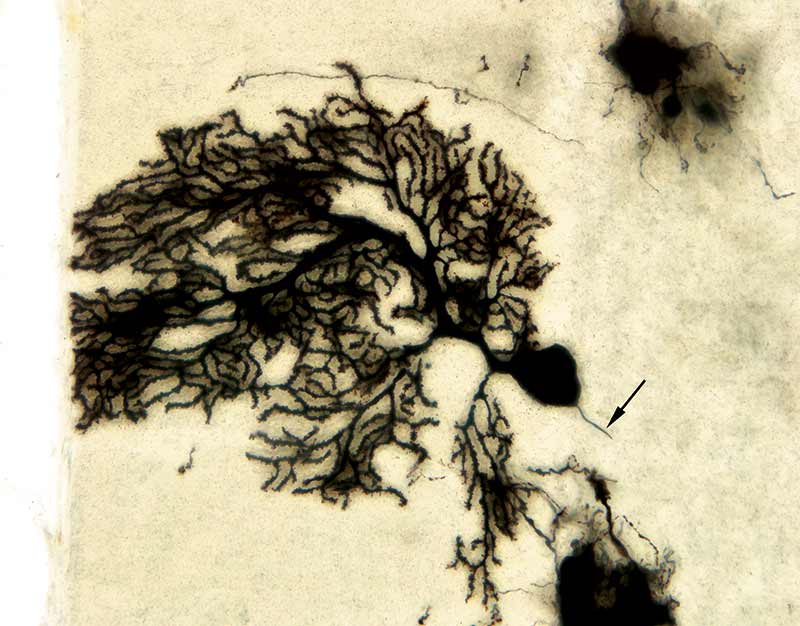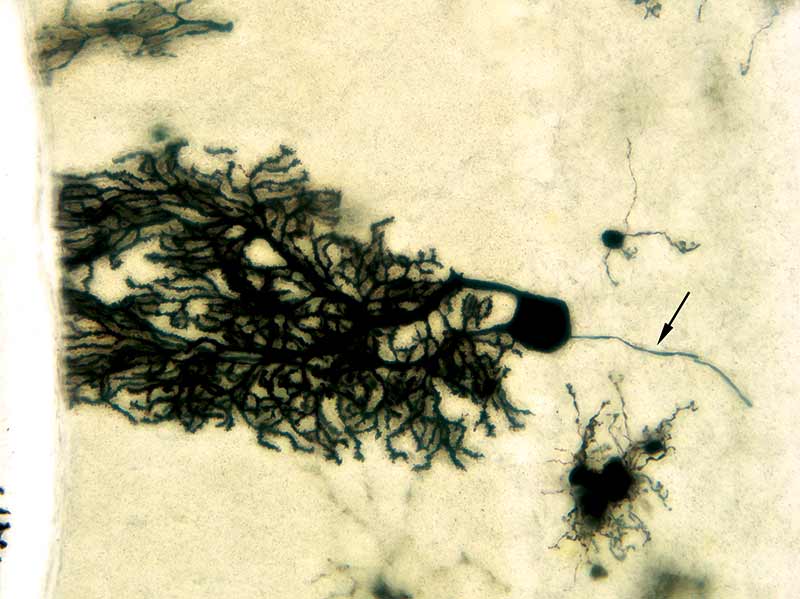FD Rapid GolgiStain™ Kit (small)
Description
FD Rapid GolgiStain™ Kit (small)
| Product Name | Catalog # | Size | Downloads | Technical Assistance | |
| FD Rapid GolgiStain™ Kit (small) | PK401A | For up to 25 mouse brains | Video Protocol/Paper |
||
Golgi-Cox impregnation1, 2 has been one of the most effective techniques for studying both the normal and abnormal morphology of neurons as well as glia. Using the Golgi technique, subtle morphological alterations in neuronal dendrites and dendritic spines have been discovered in the brains of animals treated with drugs as well as in the postmortem brains of patients with neurological diseases3, 4. However, the unreliability and the time-consuming process of Golgi staining have been major obstacles to the widespread application of this technique
FD Rapid GolgiStain™ Kit is designed based on the principle of the methods described by Ramón- Moliner2, Glaser and Van der Loos5. This kit has not only dramatically improved and simplified the Golgi-Cox technique but has also proven to be extremely reliable and sensitive for demonstrating morphological details of neurons and glia, especially dendritic spines. The FD Rapid GolgiStain™ Kit has been tested extensively and widely used on the brains from several species of animals as well as on the specimens of postmortem human brains.
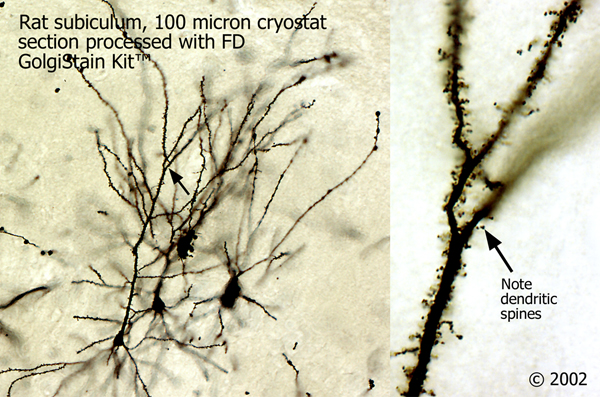 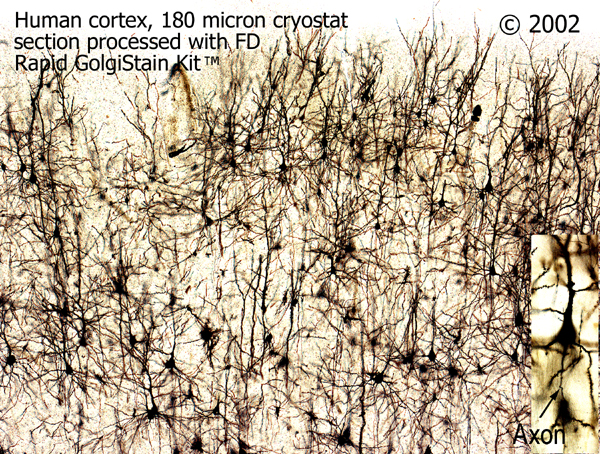 |
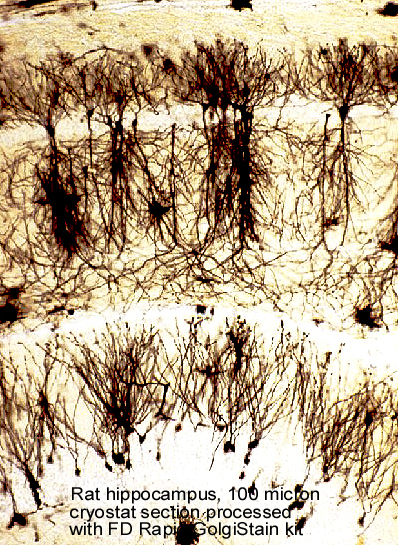 |
Kit contents:
Store at room temperature
Solution A 125 ml
Solution B 125 ml
Solution C 125 ml x 2
Solution D 125 ml
Solution E 125 ml
Glass Specimen Retriever 2
Natural hair paintbrush 2
Dropping bottle 1
User Manual 1
Materials required but not included:
- Double distilled or deionized water.
- Plastic or glass tubes or vials.
- Histological supplies and equipment, including gelatin-coated microscope slides, coverslips, staining jars, ethanol, xylene or xylene substitutes, resinous mounting medium (e.g. Permount®), and a light microscope.
References:
- Corsi P. (1987) Camillo Golgi’s morphological approach to neuroanatomy. In Masland RL, Portera-Sanchez A and Toffano G (eds.), Neuroplasticity: a new therapeutic tool in the CNS pathology, pp 1-7. Berlin: Springer.
- Ramón-Moliner E. (1970) The Golgi-Cox technique. In Nauta WJH and Ebbesson SOE (eds.), Contemporary Methods in Neuroanatomy. pp 32-55, New York: Springer.
- Graveland GA, Williams RS, and DiFiglia M. (1985) Evidence for degenerative and regenerative changes in neostriatal spiny neurons in Huntington’s disease. Science. 227:770-3.
- Robinson TE, and Kolb B. (1997) Persistent structural modification in nucleus accumbens and prefrontal cortex neurons produced by previous experience with amphetamine. J. Neurosci. 17:8491-7.
- Glaser ME, and Van der Loos H. (1981) Analysis of thick brain sections by obverse-reverse computer microscopy: application of a new, high clarity Golgi-Nissl stain. J. Neurosci. Meth. 4:117-25.
Additional information
| Weight | 3.4 lbs |
|---|---|
| Dimensions | 12 × 7 × 7 in |

